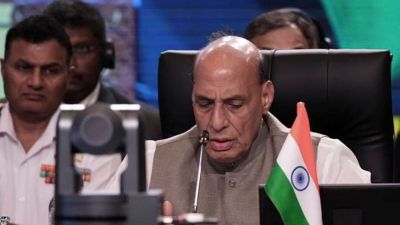‘Faulty CCTVs in trains, poor security at some stations’: Study on women’s safety in Delhi Metro
A DMRC spokesperson said faulty cameras are immediately replaced at maintenance depots to ensure that no train is inducted in revenue service with faulty CCTVs.
 Among the 70 women, 60 said they had experienced harassment at least once inside the Metro. (Express Photo)
Among the 70 women, 60 said they had experienced harassment at least once inside the Metro. (Express Photo)Between 2020 and 2024, around 300-500 CCTV cameras inside Delhi Metro trains were found to be non-functional each year. The data was shared by the Delhi Metro Rail Corporation (DMRC) in response to an RTI filed by Mishthi Khurana and Yashika Jain, principal investigators of a study on women’s safety in the Delhi Metro.
According to the DMRC’s reply, 479 in-train cameras were found non-functional in 2020, 432 in 2021, 503 in 2022, 337 in 2023 and 406 in 2024. In the response, it also said trains undergo regular inspections before entering service and that faulty cameras are repaired or replaced during the process. As for CCTV cameras at stations, it said, “the information is not available in any material form”.
The women’s safety report, ‘Between Stations’, was launched on Saturday at the HAQ Summit 2025, titled ‘Her Right to Roam’, at Pragati Maidan’s Crafts Museum. “This year’s theme focuses on public safety and accessibility for women, reimagining how cities can become spaces of freedom, not fear,” said Aanya Wig, founder of the NGO, Her Haq.
The report is based on an analysis of the RTI response, spot checks at stations, interviews of 10 staff across Metro stations, and around 70 women in the age group of 18 to 30 who have used the Delhi Metro. It covered 18 stations across multiple lines, including Rajiv Chowk, Kashmere Gate, Vishwavidyalaya, Hauz Khas, Lajpat Nagar, Durgabai Deshmukh South Campus, Shahdara and Janakpuri East. The aim was to capture a range of commuter experiences, from high-footfall interchange hubs to stations previously flagged for safety or connectivity issues.
Here’s what it found:
-CCTV coverage “remains uneven”, especially across older stations and during off-peak hours.
“There are no major blind spots (from CCTVs), but maybe some areas near the tracks or washroom corridors or can have limited visibility,” said a staff member at South Extension station, as quoted in the report.
Another staff member at Green Park station said that while camera placement had been improved after recent audits, older stations still depended on manual supervision in some corners. “Staff consistently acknowledged that CCTV forms the backbone of surveillance across the Delhi Metro network,” the report stated.
-The number of security personnel at each station fluctuates with crowd levels.
At interchange stations like Rajiv Chowk and Kashmere Gate, where footfall remains consistently high, multiple CISF teams patrol the concourse and platforms, the report noted. In contrast, at smaller or less crowded stations such as Vinobapuri or Karkardooma Court, staff strength is scaled down during lean hours. “Women officers are specifically deployed during peak travel times and near women’s compartments,” one employee said. The report opines that this may create an unequal layer of protection.
-Most women surveyed faced harassment at least once in the Metro
Among the 70 women, 60 said they had experienced harassment at least once inside the Metro. Sixteen respondents said they faced such incidents “many times”. 45 women also said they changed their travel timings to avoid feeling unsafe.
-Lighting and visibility also emerged as concerns.
While 37 respondents said stations were adequately lit, 18 described them as poorly lit, especially near washrooms, connecting passages and exits leading to dimly lit streets.
Staff from South Extension and Vinobapuri stations were quoted in the report as saying peripheral areas could be dimly lit or secluded even if technically under CCTV coverage. In contrast, larger or newer stations such as Lajpat Nagar and Durgabai Deshmukh stations were described as bright and open.
What DMRC said
When contacted, a DMRC spokesperson said: “DMRC is considered one of the best modes of public transport in terms of providing safe, secure and seamless travel to its commuters, including additional safety measures for its women commuters.”
“Besides having a dedicated coach for them in its fleet of over 350 trains, there is CCTV surveillance too inside trains by around 11,000 CCTV cameras… All its Metro stations are equally under surveillance through a robust mechanism of around 13,000 CCTVs. However, it is also pertinent to mention that as a result of continuous use, these cameras too need periodic maintenance or develop some technical issue occasionally, resulting in minimal non-functionality. At such a time, they are attended to on top priority, immediately.”
The spokesperson said a “misleading inference” was made out of the “selective data”. “Out of 24,000 CCTVs in its network functional daily, the annual figures of non-functional cameras are in the range of 300-500 CCTVs only…”
He added, “… faulty cameras are immediately replaced at maintenance depots to ensure that no train is inducted in revenue service with faulty CCTV. The same was clearly mentioned in the concerned RTI response.”
To ensure women’s safety, he said: “… a Kali squad is in place, which is a security initiative by the CISF in the Delhi Metro that uses plainclothes and uniformed women commandos trained in the Filipino martial art Pekiti-Tirsia Kali. These commandos are deployed to protect women commuters by responding to issues like male intruders in ladies’ coaches and other offences…”
On security personnel, the spokesperson said, “CISF, which looks after security in DMRC premises, has a robust system in place to manage security requirements as per need/periodic assessment,” adding that women officers are also deployed during off-peak and late-night hours.







